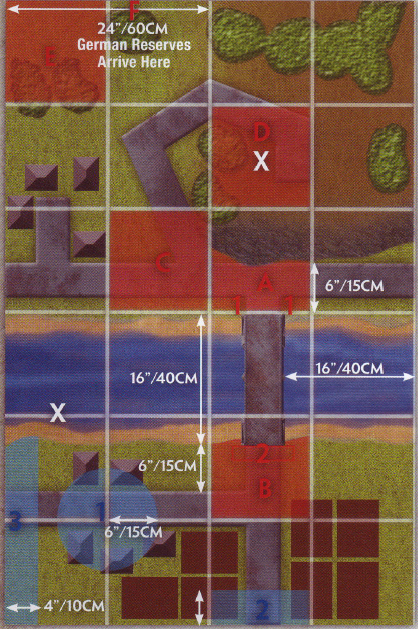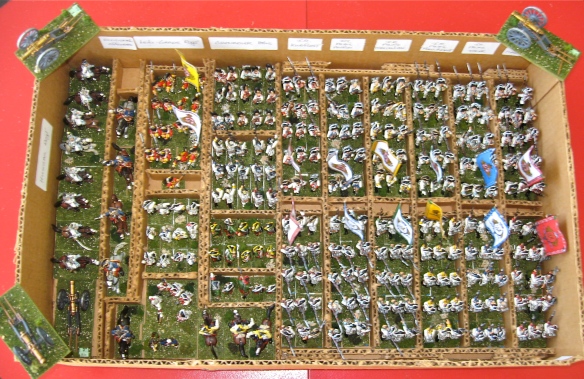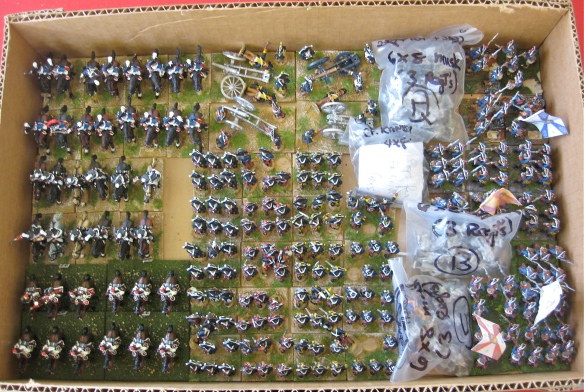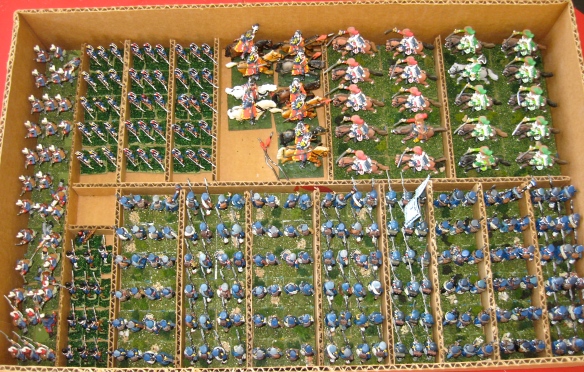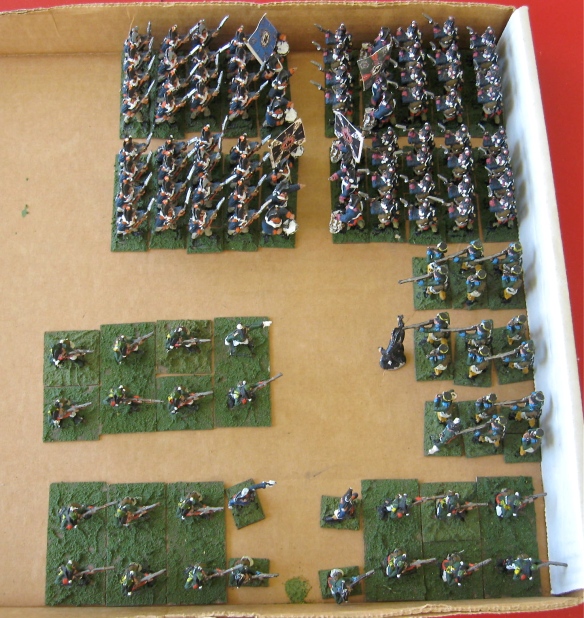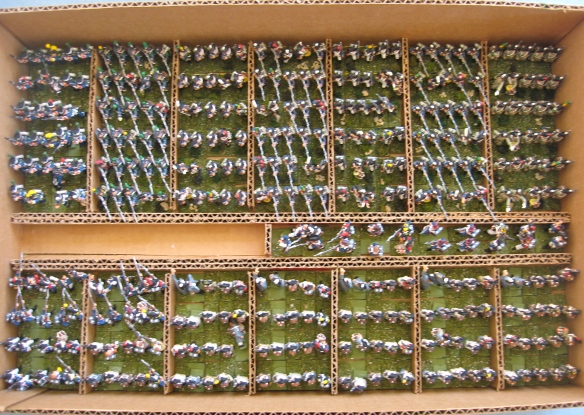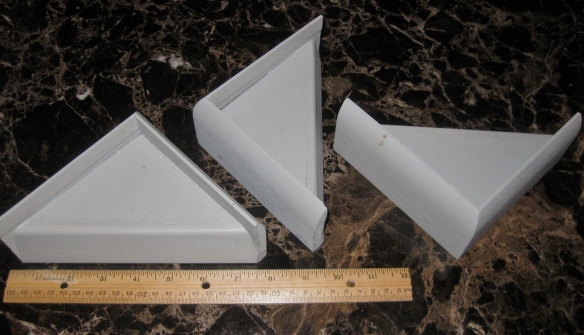WR stated way back in YR2004 with his first Flames of war (FOW) game using Version 1.0 of the rules and supplement books. So WR has seen the many little problems which pop up when using the larger miniature and the FOW rules, all which date back to that YR2004 beginning period. Basing the miniatures quickly came to the forefront. WR couldn’t base the same number of 20mm miniature on their 15mm infantry team basing. So, WR had to make different basing arrangements, keeping in mind the larger basing sizes would have on rules and game play. The thought of collecting the FOW 15mm miniatures wasn’t an option. The WWII collection was all 1/72, 1/76. or 20mm, some painted, with many more unbuilt 1/72 kits and miniatures to construct and paint. So WR knew he was going along his own path, as most FOW gamers locally used the Battlefront 15mm miniatures, and hence the standard FOW basing footprint. After some trial and error, WR came up with the following basing system for his FOW WWI, WWII, and his future Korea war or Vietnam war based collections.
Materials: WR uses basic vinyl or linoleum floor tiles 12″x12″ and 1/8″ thick size for his FOW basing material. The common boxed floor tiles found in most hardware stores for about 80 cents per sheet and comes in various shades or texture design. WR purchases the box of 40 sheets and tends to use the lighter shades of vinyl tile thus making writing the unit identification on base easy to see and read on his FOW bases. With the 1/8″ edge, the ability to finger grip the based miniature aids in miniature movement and avoids grabbing the actual miniatures to shift the based miniatures or vehicle tabletop position every turn. Far in the past WR used thick and dense artist board or wood, such as basswood or balsa for basing, but found the bases tended to wrap. Should note the tile material has a bit of weight feel to the basing vs. wood or paper products. If the vinyl tile bases wrap, a little heat quickly bends them to flat state.
Side note: For his naval ship models (1/700 scale) display and textured gaming sea state base, the darker grey or blue floor tile used.
Tools: Pencils, rulers, small band saw, table sander, hand pliers, wide blade hand file, and plastic bowl or bags for tile cutting debris,

Vinyl or linoleum standard tile sheets (grey and light brown here). Hand pliers, wide hand file, his table sander and band saw equipment. Note the sample infantry base at the sander disc wheel.
Process: First measure out and draw the cutting lines on the tile sheet. using pencils and ruler. The basing size templates are written about / noted below depending on the basing unit. After marking the vinyl floor tile sheet with lines, WR cuts the tile piece with a simple band saw. Hand feed the band saw with material and follow drawn lines. Keep the cutting straight with slight adjustments while cutting and keep fingers clear of the band saw blade. WR typically does two to three sheets at a time, placing excess standard large or small infantry bases, or standard 12″ length strips cut to common widths like 1.75″, 2″ etc. into a future use box. Once the basic shapes cut WR then uses the hand pliers to nip off each base corner to a slight degree. After all bases nicked, the bases are corner sanded to smooth the corner curve using his table sander disc. Basically just smooth the sharp double points at each nicked corner by holding the base material against the rotating sanding disc just lightly. The sander can quickly reduce your vinyl bases to uneven shape,, so lightly goes the process. If no table sander available, WR in his past has used a basic wide hand file to round the nicked base corners. Keep in mind the table sander will create dust and fine vinyl particles of material so WR recommends a common mask while operating the table sander in open air. WR “rounds the corners” lto avoid the hard 90′ angular base corner look on the tabletop and avoids base stacking if the base is slightly turned. Keep those small base corner nick material or larger excess trimming material, in a plastic bowl or tub. WR has found many uses for the odd shaped cut offs including creating ruins and fallen brickwork texture on his FOW bases ( link: Military Trains, Tolley, Ruins and Rubble). This completes the base material process, the next steps are painting the base with paint, applying textured terrain, affixing the miniatures, and label the base with unit identification














